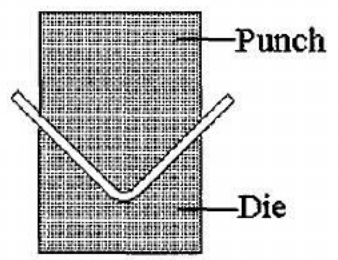Design for Manufacturing: Sheet Metal Stamping Stations
This rule provides instruction on the physical placement of stations for stamping operations to prevent weakened dies, allow for manufacturing flexibility, and promote less complex maintenance.
Excessive numbers of punches tend to cause a die to be weaker than might otherwise be possible. This can be easily solved by adding idling stations in the pressing sequence. Adding idling stations in the pressing sequence will provide both die block strengthening and stripper plate strengthening. Idle stations are primarily used for strengthening purposes.
Despite their use in strengthening the die, idle stations are also used to provide great flexibility when the desire to incorporate programmable tooling occurs. For example, a particular style of blade used on a scalpel may vary depending on the scalpel bayonet used, and, as a result, different attachment points for connecting the scalpel to the bayonet are necessary. An idle station could provide a temporary extra punch or different pressing when the aforementioned scalpel blade lot order changes to a different bayonet attachment style. This added flexibility allows future expansion of the product line with minimal retooling costs.

In addition to the aforementioned reasons, maintenance operations may also be facilitated through idle stations. Idle stations provide greater spacing in die operations and allow for easier maintenance performance. Sometimes maintenance time reduction may be enough to justify the implementation of idle stations.
If:
(a) While designing products that will utilize stamped components:
(b) If the component is worked at multiple stations
(c) Or if the stations require excessive maintenance
Then:
(a) Add idling stations as necessary to strengthen the die blocks and stripper plates
(b) If programmable tooling is used, implement idle stations to allow for possible tooling expansion.
(c) Add idling stations to permit maintenance accessibility
By following this rule, product designers will produce fewer die-crowding-related defects in stamped sheet metal parts. In addition, maintenance may also be made more efficient and less time-consuming.
Further Reading:
Poli, Corrado. (2001). Design for Manufacturing - A Structured Approach. Elsevier. Online version available at: http://app.knovel.com/hotlink/toc/id:kpDMASA001/design-manufacturing/design-manufacturing





Member discussion